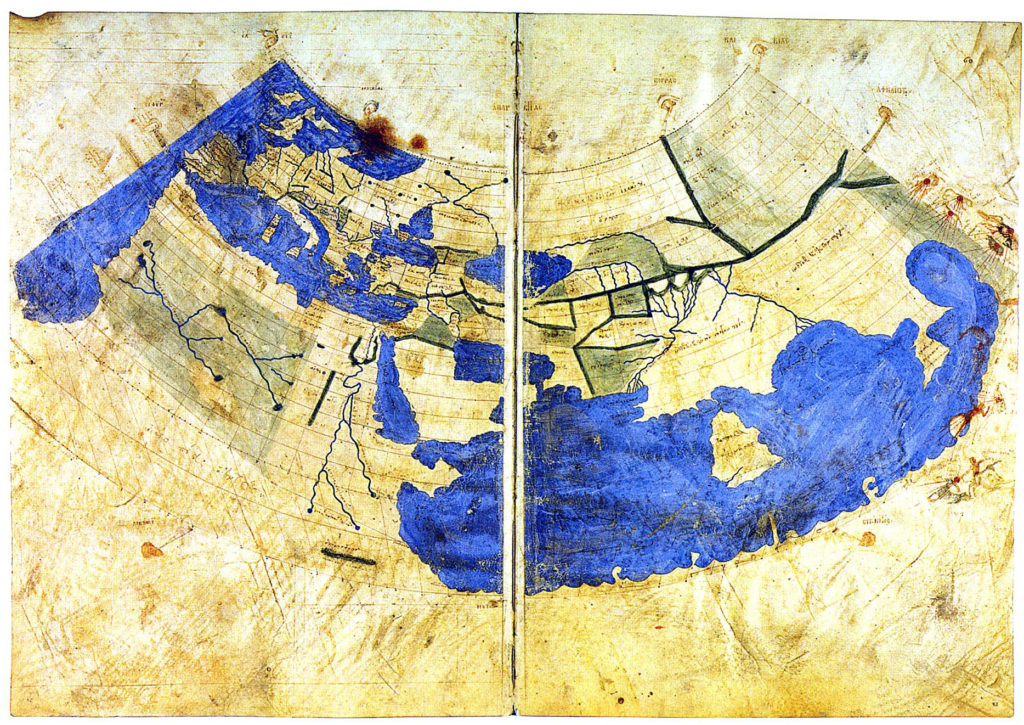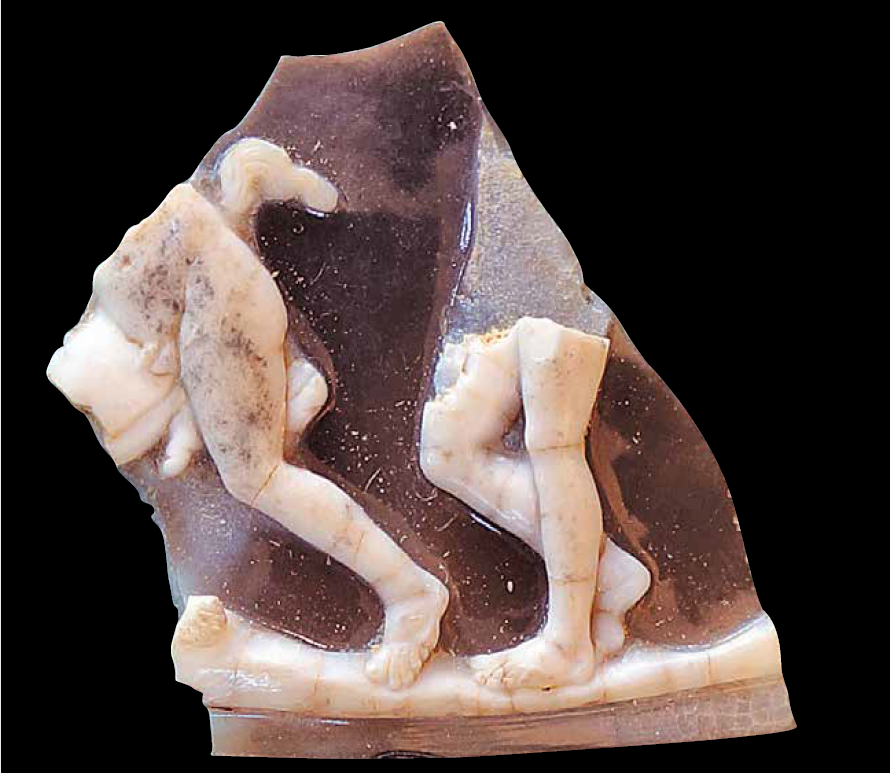Over the last weeks, this series has focused on Java and Bali, and it became clear that ties between the Far East and the Far West in the first centuries of our era were closer and more direct than one would expect on the basis of handbooks and scholarly discourse – even though it is hard to pinpoint to unequivocal evidence for direct contact. The world beyond India – to look at it from a Greco-Roman perspective – was of course much bigger than the Indonesian archipelago, and, indeed, it is clear that Hellenistic and Roman authors knew that the world did not end at India. But what, exactly, they knew is much less straightforward, as everything they write is either extremely sketchy or completely unreliable (in most cases, it is actually both).
Ptolemy’s Geographica and the world beyond India
Particularly tantalizing is the work of the mid-second century CE scholar Ptolemy, whose Geographica lists the coordinates of not fewer than 8000 places in the known world that together form the basis of a map covering the area from the Atlantic in the Far West to far beyond the Indian subcontinent in the Far East. As part of his introduction to the map, Ptolemy gives a detailed description of a sea voyage between the southernmost tip of Sri Lanka, and a mysterious place named ‘Kattigara’. This settlement, of which very little else is known, was to be found beyond a place referred to as the ‘Golden peninsula’ (Ptolem. Geogr. 1.13-14). Ptolemy based his account on earlier Greco-Roman authors, some of whom may have visited the area personally, though we know very little about their details. A major source was the early second century CE geographer Marinos of Tyre.

So: where are the places where Ptolemy is talking about? His work gives the coördinates, but these are generally not thought to have been fully reliable for the far East. As far as the ‘Golden peninsula’ is concerned, it is interesting that Ptolemy actually states the peninsula needed to be crossed rather than circumnavigated. For this reason, people have thought, probably rightly, that the ‘Golden Peninsula’ in fact is the Thai-Malay peninsula. If the Golden peninsula is in modern-day Thailand and Malaysia, Kattigara probably is to be sought somewhere in Vietnam, but this is something for a later moment.
Archaeological Excavations at the Isthmus of Kra
The question, then, becomes whether this greater Greco-Roman knowledge of the Thai-Malay peninsula also translates to a greater archaeological visibility of cultural contact. Has more Roman stuff been found in the ‘Golden peninsula’ than was the case at Java? A recent overview of Greco-Roman finds from the upper part of the Thai-Malay peninsula suggests that, in fact, this was the case. Particularly remarkable are the finds from a number of sites in the region of the so-called Isthmus of Kra in the environs of modern Ranong. This is the point where the Thai-Malay peninsula is at its narrowest, and it appears to have been a major crossing point in the first centuries of our era – it may have been the point to which Ptolemy is referring, but this is not certain.

Archaeological excavations in the region of the Isthmus of Kra have turned up large numbers of objects from Han-China together with certain amounts of artefacts from the Roman world. Compared to what we have been seeing at Java, the identification of these artefacts as ‘Roman’ is much more straightforward, and they were larger, and more luxurious, including finely decorated first century AD glass vessels, several finely decorated gemstones, and even a cameo fragment from the Augustan period with a clearly recognizable Satyr – Greco-Roman iconography had, to some extent, entered Thai material culture.
Does this mean that we have to reckon with substantial quantities of Greco-Roman travellers all the way to the environs of Ranong in Thailand? That would be stretching the evidence beyond the point of credibility. But, if we combine the textual sources with the archaeology, the difference between the Thai-Malay peninsula and the Indonesian archipelago is certainly telling, and it suggests that even if it was quite an exotic destination for someone from the Roman Mediterranean, the Thai-Malay peninsula at least could be a destination.
References
B. Borell, B. Bellina & B. Chaisuwan (2014). ‘Contacts between the Upper Thai-Malay Peninsula and the Mediterranean World’ in: Before Siam was Born: New Insights on the Art and Archaeology of Pre-Modern Thailand and its Neighbouring Regions, 98-117.
J.L. Berggren & A. Jones (2000) Ptolemy’s Geography: An Annotated Translation of the Theoretical Chapters. Princeton University Press.
Miko Flohr, 04/02/2020
